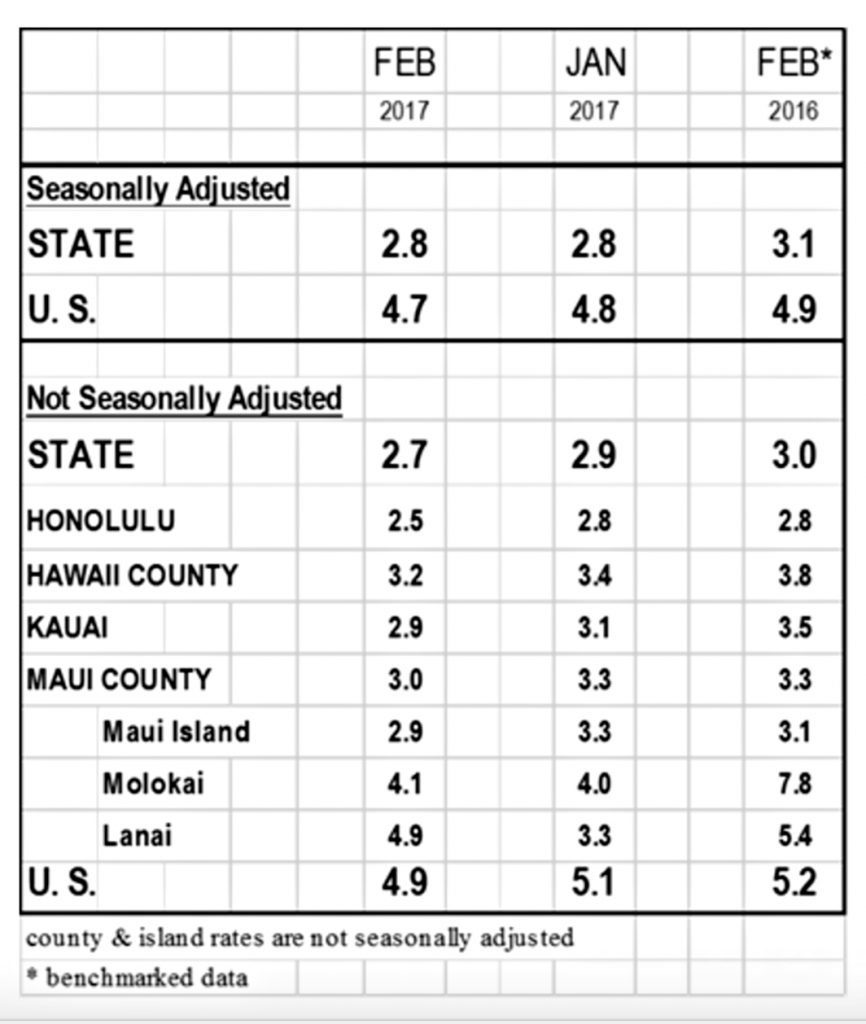Hawai‘i County Unemployment Rate 3.2%
 The Hawai‘i State Department of Labor & Industrial Relations today announced that the not-seasonally-adjusted unemployment rate for Hawai‘i Island was 3.2% in February 2017, .2% less than the previous month and .4% less than the same time period in 2016.
The Hawai‘i State Department of Labor & Industrial Relations today announced that the not-seasonally-adjusted unemployment rate for Hawai‘i Island was 3.2% in February 2017, .2% less than the previous month and .4% less than the same time period in 2016.
The state’s seasonally adjusted unemployment rate for February was 2.8%, the same as in January.
Statewide, 675,500 were employed and 19,350 unemployed in February for a total seasonally adjusted labor force of 694,850.
Nationally, the seasonally adjusted unemployment rate was 4.7% in February, compared to 4.8% in January.
Both initial claims and weeks claims increased by 194 or 18% and 1,577 or 24.1% respectively for unemployment benefits compared to one year ago.
Over-the-month, both initial claims and weeks claims decreased by 16.6% and 5% respectively in February 2017.
The unemployment rate figures for the State of Hawai‘i and the U.S. in this release are seasonally adjusted, in accordance with the U.S. Bureau of Labor Statistics (BLS) methodology.
The not seasonally adjusted rate for the state was 2.7% in February, compared to 2.9% in January.
Seasonal Adjustment
The seasonal fluctuations in the number of employed and unemployed persons reflect hiring and layoff patterns that accompany regular events such as the winter holiday season and the summer vacation season. These variations make it difficult to tell whether month-to-month changes in employment and unemployment are due to normal seasonal patterns or to changing economic conditions. Therefore, the BLS uses a statistical technique called seasonal adjustment to address these issues. This technique uses the history of the labor force data and the job count data to identify the seasonal movements and to calculate the size and direction of these movements. A seasonal adjustment factor is then developed and applied to the estimates to eliminate the effects of regular seasonal fluctuations on the data. Seasonally adjusted statistical series enable more meaningful data comparisons between months or with an annual average.















